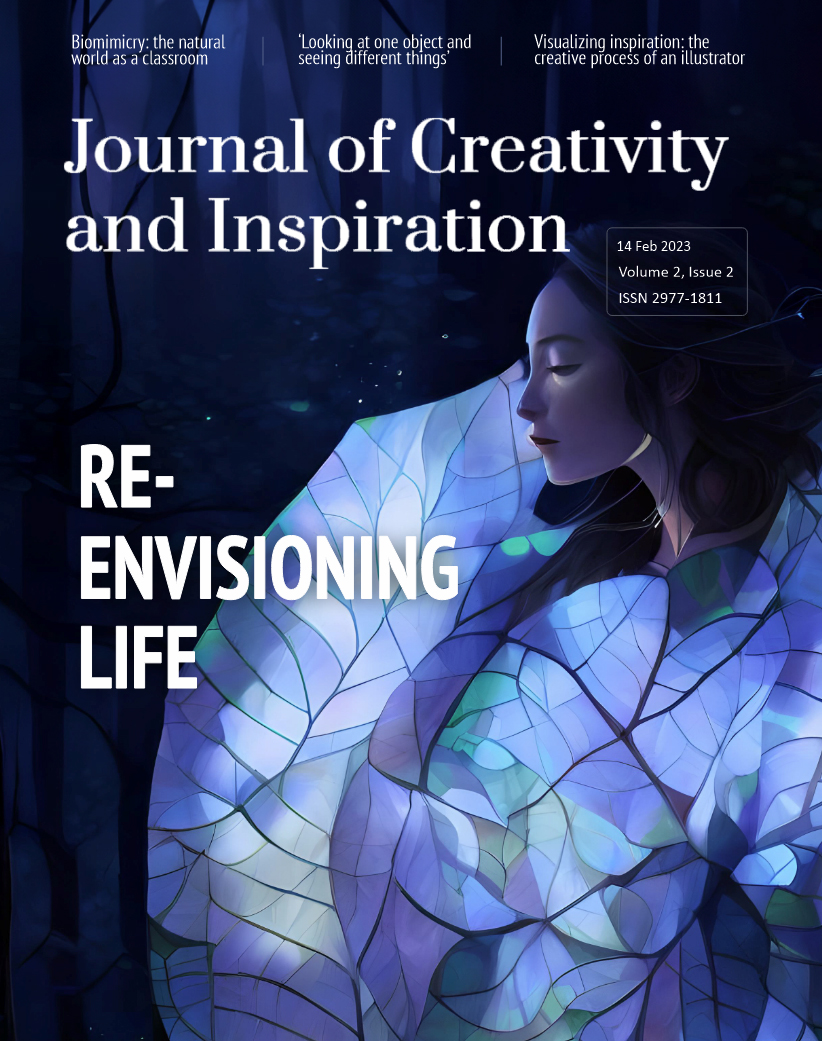Visualizing inspiration: the creative process of an illustrator
14 February 2024 – Vol 2, Issue 2.
Creating art is a method to explore human experiences. For me, art mainly operates through images. I create illustrations, combining traditional hand drawings with digital art. In this article I will share why and what inspires my visual art form.
Creative insights
My primary inspiration comes from reading. Literature, poetry, and non-fiction (such as psychology, mythology, philosophy). Illustration often accompanies texts, whether in literary works of fiction or non-fiction, so my profession as an illustrator is a natural extension of my interests and sources of inspiration. Music and film are strong secondary sources, as they can be analogous to literature. For the most part, all these inspirational sources have strong philosophical leanings. I do often ‘read for fun’ or watch films that are primarily ‘entertainment’, but these rarely make a lasting impression. Nature is important as well, but less as a direct source and more as a space for quiet and awe which can lead to deeper thought and reflection. I find nature regenerative and restorative, and so each year I spend some time in places where there are few people and no cell tower signals. Nature is a refuge from the modern world. In many ways nature is a foundational part of mythology and psychology; it is present in our symbols and dreams. These subjects may explore human nature and the subconscious, but they are rooted in our interpretation of the natural world around us.
There is a popular conception that artists receive some ‘divine inspiration’ where an idea strikes like a bolt of lightning, and then they work furiously to release that divine spark. While this certainly does happen on occasion, it is not an everyday – or even weekly or monthly – occurrence. For me, the reality is considerably more mundane and ordinary. My inspirational moments tend to involve reading a book or watching a movie, being moved by ideas/concepts/philosophies explored therein, and then finding a way to interpret them in my own work. Sometimes a visual idea is relatively immediate, but more often it involves considerable work, writing and sketching to even start to figure out what I am going to create. Deadlines don’t allow for the luxury of waiting for inspiration to strike. It is very helpful to have an artistic work ethic much the same as other professions.
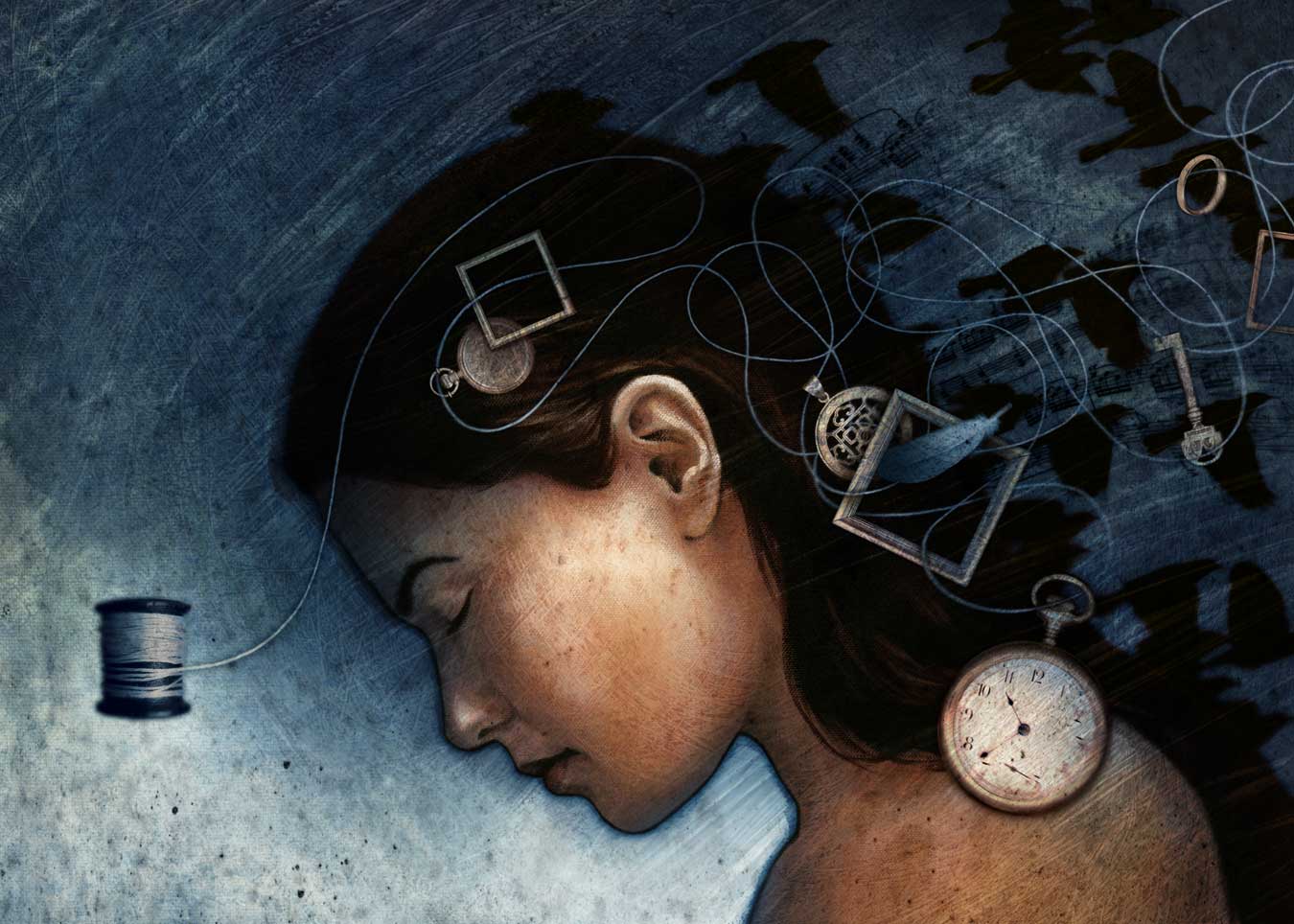
‘Sleep’ by Matt Manley, 2007. © The artist.
Non-linear narrative
Storytelling is an extension of my love of film and literature, and it informs the structure of the final art work. However, my approach to storytelling is mostly non-linear. Film, literature, and music – unlike static forms of visual art – have the benefit of time as an aspect of their storytelling structures. This however leads to a fairly linear plot in most cases. There is even a linear cinematic formula that many films (and many novels as well) openly follow, for example, the work of the American author Sydney Alvin Field. My favourite novels and films subvert this element of time/plot as much as possible, without becoming fully abstract, within the framework of their necessarily linear mediums. The plot is of very little concern in these works, and so this is the case for my work as well.
While many of these non-linear works of storytelling do employ minimal plot, they all tend to have similarly open structures. They may jump back and forth in time; or purposely confuse, conflate, or jumble the beginning, middle, and end. There may be multiple narratives nested within each other, or occurring simultaneously. Toward the more abstract end of the spectrum, seemingly unrelated elements of a plot or story may be presented in apparently random order, leaving the audience to find connections on their own. These are the approaches that I take in my visual work. It’s like finding a poetic way of saying something that could be said simply and directly. I’m not interested in conveying a particular story as a plot, instead, I present some of the elements to the viewer and allow them to create their own narrative. If their interpretation doesn’t line up with my intentions, then that is fine; that doesn’t bother me in the least. In fact, it probably creates a stronger experience for the viewer.
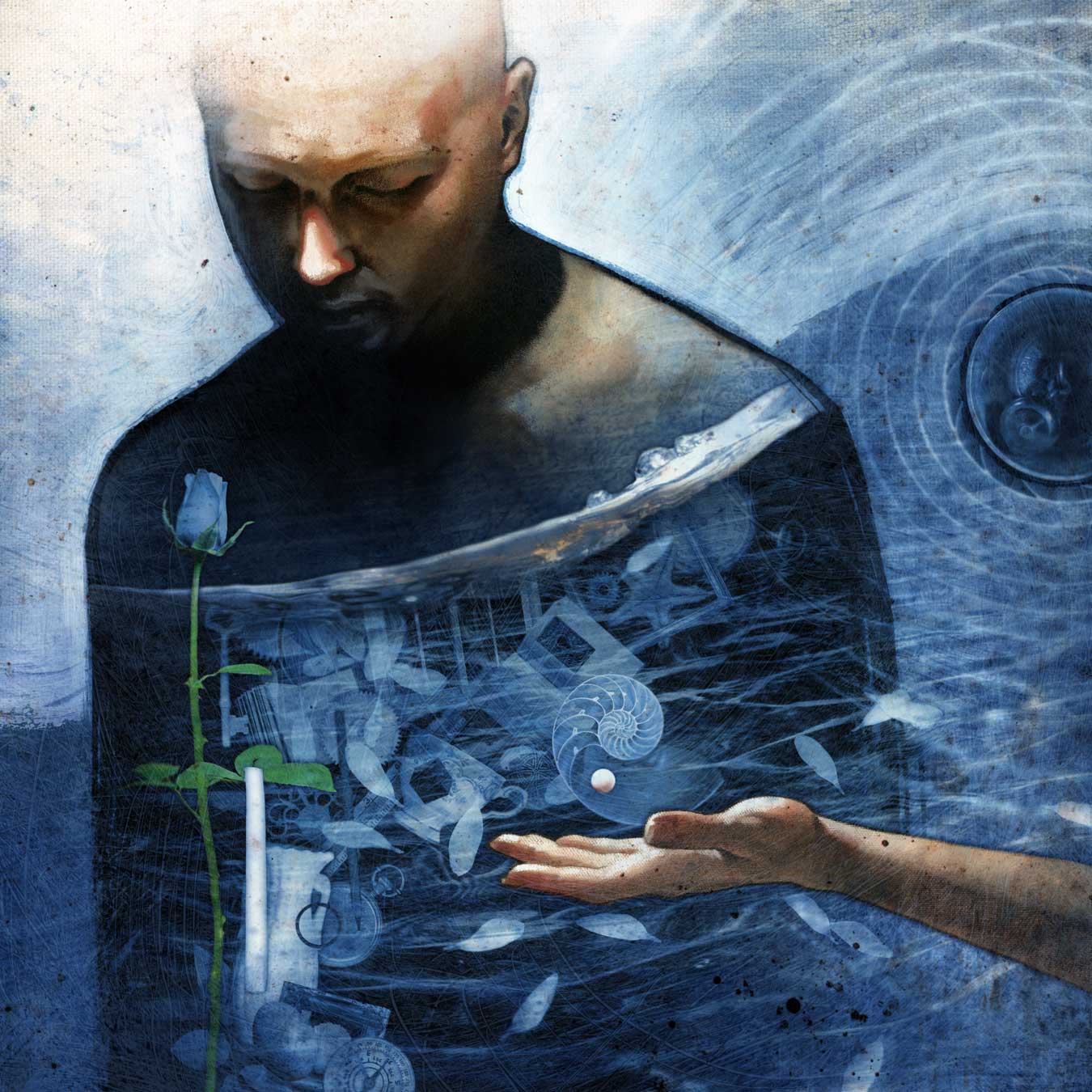
Involution’ by Matt Manley, 2007. © The artist.
Intuitive ambiguity
I’m drawn to ambiguity and symbolism in art. By incorporating both representational and abstract concepts, I invite the viewers to interpret my work personally. I deliberately try to keep my conceptual intent ambiguous, creating a space for individual interpretation and a personal connection to the artwork. However, when an artist tells a story, something of themselves is always present within the art. Many of the artists that I admire create work that is very personal, but at the same time, they achieve ambiguity and open-ended stories. They are both deliberately inserting themselves into their work and getting out of the way as much as possible. This allows for both a personal connection of the artists to the work, and a personal interpretation of it by the audience. I’m simply reflecting that back in my own work, wanting to give my audience the same experience that I have when taking in other works of art that inspired me. In doing so I am conscious of a desire to create an image that the viewer can spend some time with, as opposed to direct art that is easier to digest and understand.
I try to achieve this through composition, use of colour and value, a certain level of complexity, symbols, and keeping my conceptual intent less clear and more ambiguous. I often reject or avoid visual solutions that feel too direct. Individual interpretation requires a degree of vagueness. I try to incorporate both representational forms and more abstract concepts in my work, giving an entrance point to the work but also asking the viewer to participate in the ultimate completion of the idea.
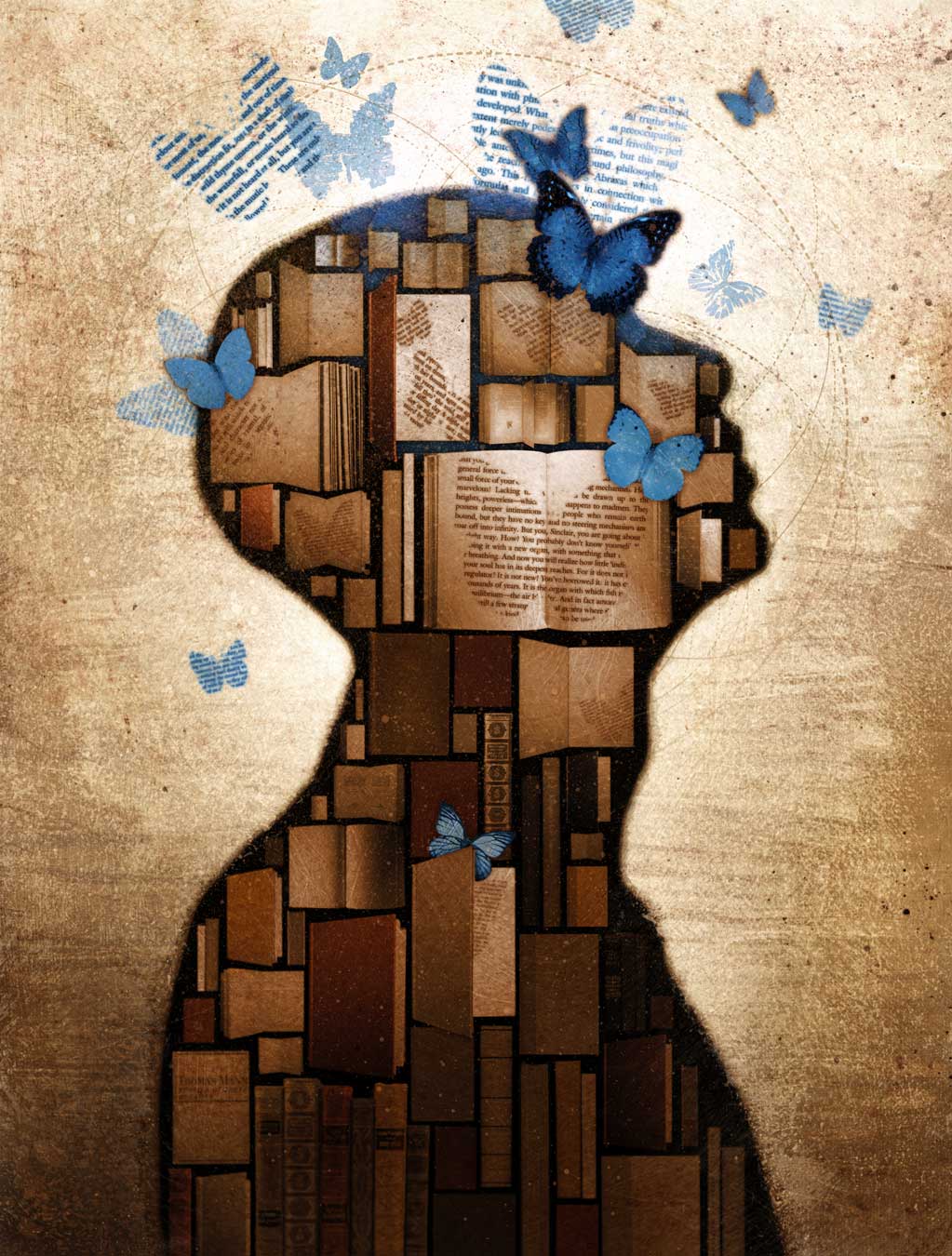
‘Books’ by Matt Manley, 2009. © The artist.
As a young artist, I explored both representational and abstract extremes and was quickly dissatisfied with both. Pure abstraction often didn’t allow for much technical skill, and pure representation was often quite boring, being nothing but an exercise of style and skill. Surrealism ultimately provided a bridge between these two poles. Eventually, I found Surrealism too stylistically restrictive in its common reliance on three-dimensional space and forms. My attraction to surrealism was always more conceptual than stylistic – its embrace of psychology and the subconscious, the juxtaposition of reality and dream; its open-ended and ambiguous approach to ideas. These were all strong influences that inform my work to this day.
I am intentionally working with a symbolic non-linear structure, but that intent itself often allows for subjective connections to emerge naturally from the art. My approach to this is often intuitive, somewhere between fully unconscious and fully aware. Often my subject matter is amorphous and difficult to visualise, even in my illustrations for commercial work. I like wrestling with esoteric ideas that are difficult to pin down visually. If a concept cannot be definitively visualised, then it can be pointed or alluded to in a roundabout way. In the end, I intentionally cultivate these connections by not being intentional about it. This intuitive approach hopefully leads to an intuitive response, allowing for some degree of individual interpretation for the audience.
Emotion and logic
In my work, emotion and logic coexist. Emotion serves as the core of the work, expressed through tactile techniques. For instance, in the work ‘The Way Out’, balancing complexity and emotion was key, achieved through the incorporation of quick gestures and drawings.
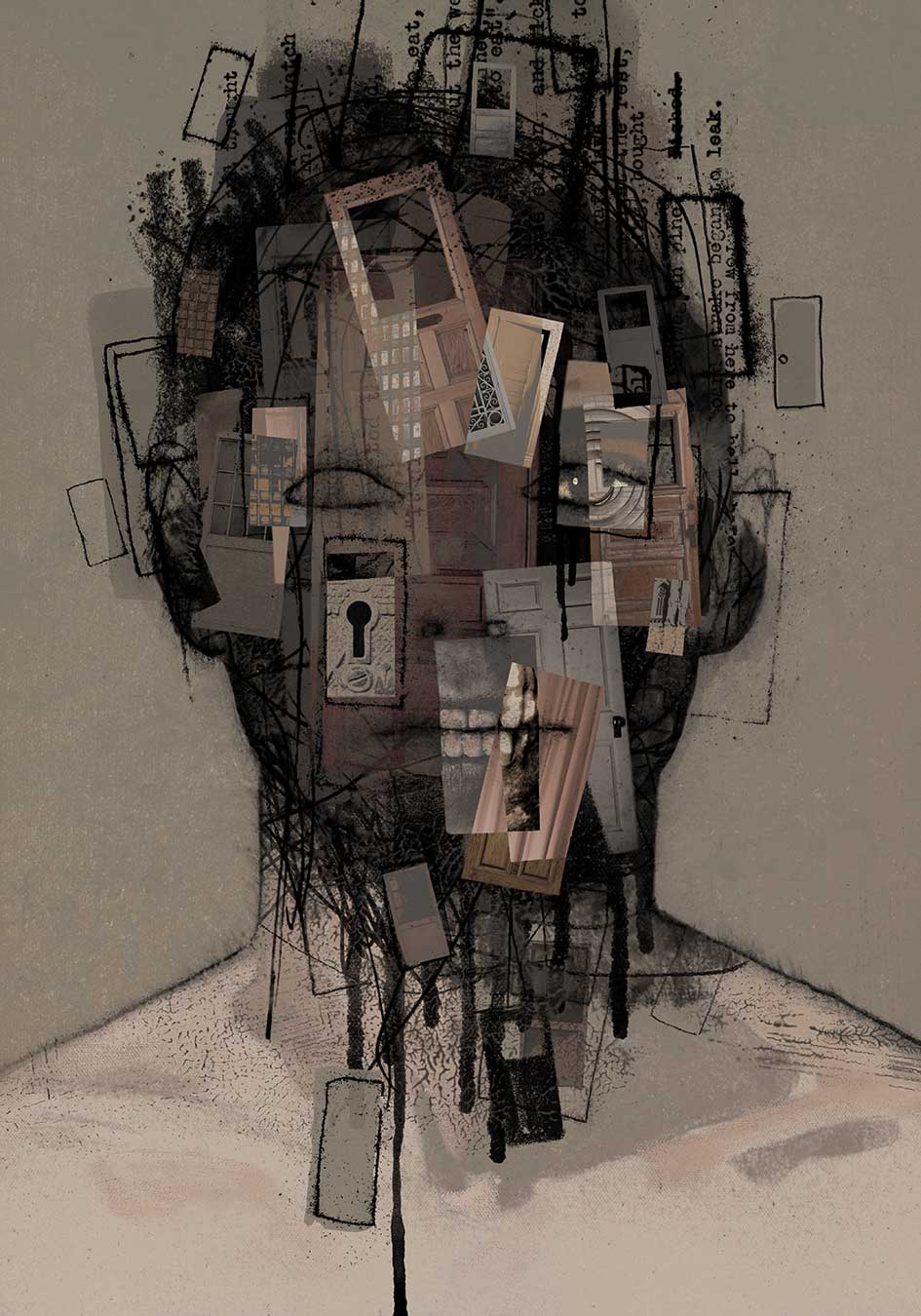
The Way Out’ by Matt Manley, 2022. © The artist.
From my perspective, the logical side is weighted more heavily when I am developing the art. Bringing an idea to fruition can be lengthy and complicated, and it can be difficult to maintain an emotional connection to the initial idea. Working out a concept, sketching, choosing a composition; this whole process requires considerably more thought than emotion. Emotion can even be a hindrance or barrier during some of these stages of work. To compensate for all this necessary logic in the process I’ve retained traditional media elements in my ultimately digital work. They are the emotional core of my work. When I’m painting, I’m only focused on the canvas in front of me. I don’t worry about all the other elements in a particular image, how they fit together, what colour they should be; none of these problems matter at the time. Just the painting. Mental chatter fades away and my focus both narrows and expands. Achieving a meditative state with open eyes. My figure paintings are generally more controlled, but the process of painting on canvas is very tactile and allows for emotional expression. Recently I’ve been creating quick gestures in ink, pencil, and charcoal and then incorporating them into the collages. Even less thought and more emotion are required for these. Sometimes it’s difficult to transition to that part of my process, but I’ve found it more and more necessary to do so. These loose and quick elements help keep both my work and my mind from becoming too dominated by my often rigorous process.
The piece ‘The Way Out’ was inspired by László Krasznahorkai’s novel ‘War & War’. I completed many finished versions of this same general idea over many years. I forget how many. At least eight of them over a decade (plus numerous unfinished versions). I was never happy with the finished work. It was always too controlled, too complex, too logical. Parts of this piece still exist as complex layers in Photoshop. There are still hundreds of layers to this. But the balance is there now. My recent explorations of gestures and quick drawings were the key that I was missing through all the years I spent struggling with this piece; until finally I achieved a finished version.
The internal canvas
Psychology and mythology prompted my shift towards using the human form in my work. I feel that the human figure represents an external sign of an internal landscape, serving as a vessel for abstract ideas with a focus on human relationships and interconnections.
Before I was interested in psychology and mythology my work was rarely figurative. It took a while for me to become comfortable with the figure. As my interest in these subjects grew, my work not only became more figurative but also more conceptual, abstract, and symbolic. My work feels like a natural extension of these particular subjects. Because they explore the interior human landscape it became necessary to incorporate figurative elements in my work. This didn’t need to be the case. Much abstract art explores these subjects as well; perhaps not mythology to much extent, but certainly psychology. I could have taken this interest in a very different visual direction and still been able to explore similar concepts.
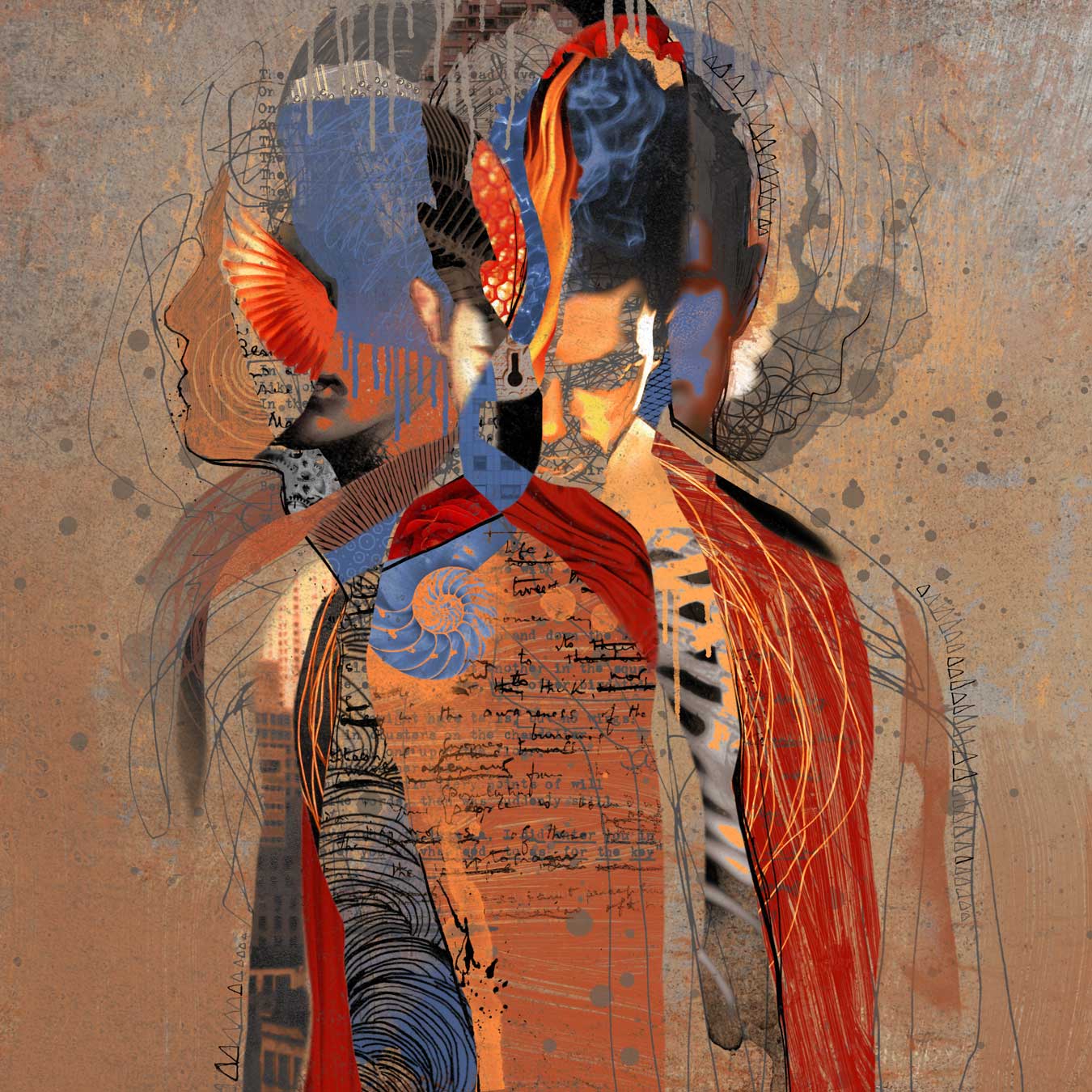
This Was Now’ by Matt Manley, 2018. © The artist.
Yet, the human figure became an anchor for psychological/mythological/philosophical ideas that I explored. Figurative elements often form a bridge between representational forms and abstract ideas in my work. The balancing element for this relationship is my avoidance of three-dimensional space. Working with dimensional space often necessitates more linear narratives and grounds the work in external realities, neither of which are artistically interesting to me. Removing spatial dimensionality allows both representational forms and abstract concepts to more easily coexist. They can be pushed in either direction as well, without appreciably altering my style, allowing me to leverage abstract ideas in some works and more direct representation in others. Because of my interest in psychology/mythology/philosophy there is usually more of an emphasis on internal realities. Sometimes external realities are almost completely absent, and sometimes inner and outer are more equally weighted. External rarely dominates my work. The filtering of external reality through our internal selves is often a primary focus of my work. Empty spaces in my illustrations also support this idea. They are the ground from which all the details emerge, and I always treat this empty ground and the subject as connected. Each needs to exist in the other. The empty spaces provide yet another contrast to explore. Quiet vs. noise, calm and chaos, silence and sound. This is the essence of the human experience…
© Journal of Creativity and Inspiration.
Images copyright as specified.
Matt Manley is an illustrator specialising in visualising concepts and bringing them to life. He uses oil, pencil and ink drawings, paint textures, photos, and scans, which are all layered and combined digitally in Photoshop.
